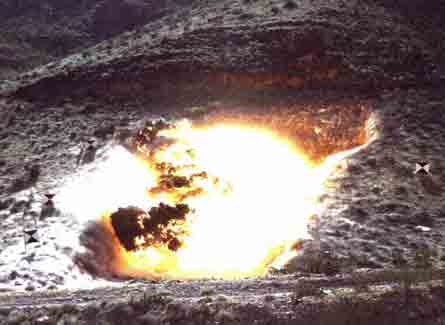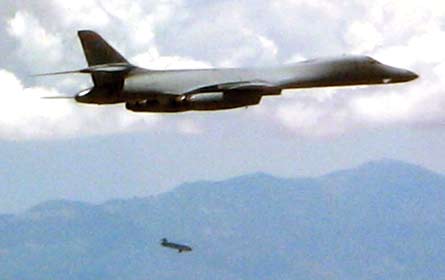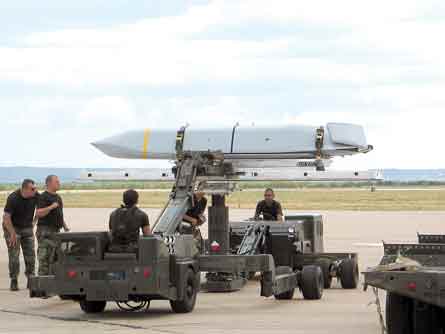An "extreme range" cruise missile proposed by Lockheed Martin could be a contender for the US Air Force's emerging long-range strike requirement
Lockheed Martin Missiles & Fire Control has revealed it is working on a new concept for a 900kg (2000lb) warhead modular long-range strike weapon, designated Cruise Missile Extreme Range (XR), replacing previous proposals for a heavyweight derivative of its current production AGM-158 JASSM missile.
Cruise Missile XR would retain parallels with the JASSM family, including use of the same industry supplier base, but its future development remains heavily dependent on the directions emerging from the US Air Force's current long-range strike studies.
Randy Bigum, Lockheed vice-president for strike weapons, says "the long-range strike study is going to have a big impact. From there they will decide what are the sensors, what are the weapons, what is the payload? There is a spiralling off of that kind of a new capability in the 2015-2020 timeframe that says it deserves a set of weapons and sensors commensurate with what we are going to ask it to do."
The Cruise Missile XR is just one of a number of Lockheed candidates being put forward as future deep strike options Bigum acknowledges, but he also says it offers a means of leveraging existing investment in JASSM. All work done so far remains purely company funded.
Unlike the USAF-only JASSM XR, Cruise Missile XR is taking into consideration potential requirements of all three US services, including a replacement for the US Navy's Raytheon Tomahawk missile. Cruise Missile XR "is getting legs in more than the air force, so we are starting to consider how to launch it out of a tube off a submarine, off a surface ship, indeed ground launch," Bigum says. "It still has all the same kinds of characteristics, but it starts to have different tails on it for different missions."
The air-launched version would be largely restricted to USAF Boeing B-1, B-52s and F-15s, says Ed Whalen, director of strike weapons business development. "It is going to be a big weapon, it is going to need a big platform."
The naval versions remain at an early concept stage, Bigum says: "We haven't looked at any of that in detail." However, he also suggests that there may be some opportunity for technology leverage from the US Navy-sponsored "Revolutionary Approach To Time-critical Long-range Strike" (RATTLRS) programme, on which Lockheed Martin's Skunk Works at Palmdale is the lead contractor (Flight International 29 August). "RATTLRS is looking at all different kinds of launch," says Bigum.
 |
|---|
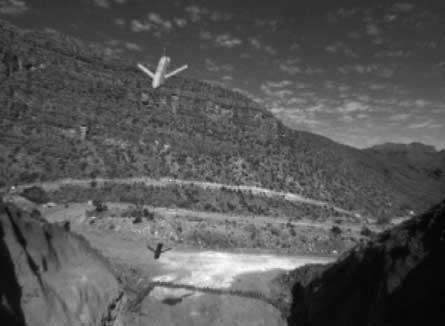 |
 |
 |
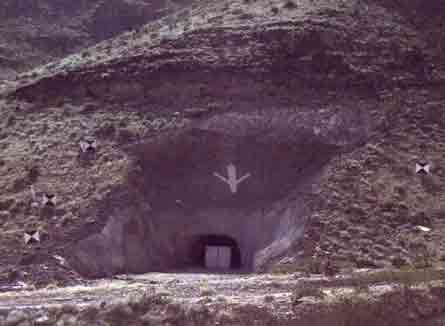 |
|
The final seconds of a demonstration JASSM strike against a cave complex at White Sands, New Mexico. |
Short timeframe
The potential timeframes for development of Cruise Missile XR could be relatively short. Whalen says that the "technology readiness levels are proven your subsystems are proven. One of the nice things, if you go look at your supplier base currently with JASSM, is that these guys are hungry and they are looking at what is beyond. We have got a good supplier base, a good logistics support trail, good TRL [technology readiness level] we wouldn't have to go research any new technology. We just have to integrate it."
Bigum says: "We can bring a lot of existing technologies together into a pretty new system with tremendous capability and that is where we are going with this. They want a lot of range and that means more gas. Once you get more gas you need a bigger engine. Once you get a bigger engine it needs more gas. How big a warhead do you want to have? What has it got to fit in? All those vary the parameters by which you would get a very long-range cruise missile."
The use of rapid development and fielding approaches, Bigum points out, was the same mechanism used to develop JASSM in the first instance. "We won that contract and won that challenge. We went and accomplished that capability and, indeed, launched into production after only four flight tests."
Cruise Missile XR development would also benefit from existing USAF-funded spiral evolution for the basic JASSM and JASSM Extended Range (ER) weapons, meaning a continuity in investment. Lockheed has built 475 JASSMs since April 2000 out of an expected requirement for 1,100. The USAF declared initial operational capability in August last year.
JASSM-ER development received initial funding in 2002 and has so far resulted in two test flights with concrete warheads. A third test later this year will be the first demonstration of the weapon with a live warhead. The 925km (500nm) range version will commence series production in 2008 under JASSM Lot 6 procurement.
|
|---|
The bulk of JASSM flight test is being conducted using B-1Bs |
Successful tests
The USAF's own forward JASSM roadmap includes development of a weapon datalink to allow man-in-the-loop control in terminal phase, and a maritime interdiction mode, with both to be fielded operationally as part of Lot 8 weapons from 2010.
Australia's JASSM order, contracts for which were signed earlier this month, includes fitting of both those Lot 8 capabilities into standard production missiles, elements of which will be brought forward prior to USAF acceptance. "Some sooner, some later," Bigum says.
Full US DoD funding of maritime interdiction mode development, building on Lockheed Martin's own internal research and development expenditure, is expected as part of the USAF fiscal year 2007 budget outlays. Bigum says the maritime capability will largely comprise software modifications, with the existing seeker "capable of handling and communicating moving targets at sea and guiding to the same accuracies that we have demonstrated [on land]".
Maritime assets
Mike Inderhees, Lockheed Martin's JASSM programme director, says the approach means that "all of the missiles that we have delivered so far, with a software update, could become maritime assets for the war fighter".
The weapon datalink will undergo preliminary design review later this year ahead of flight tests commencing in mid-2008.
Lockheed has also been working on concepts for using the basic JASSM to engage difficult-to-reach targets such as caves in mountainous terrain, with lessons again feeding into thinking about potential Cruise Missile XR capabilities. Two cave strike demonstrations were carried out at the White Sands Missile Range in New Mexico on 31 August last year.
|
|---|
JASSM reached initial operational capability with the USAF in August 2005 |
The back-to-back demonstrations, carried out as an addition to the JASSM qualification test matrix for initial operational acceptance, saw the excavation of two caves into the side of a ridge in desert mountains. The caves were then instrumented to their full depth to measure the effects of the strikes, both of which used live 450kg warheads.
After launch, the missiles were required to navigate to a pre-determined spatial position in the centre of the cave mouth, with guidance in the final few kilometres of flight carried out autonomously using an infra-red seeker. The full flight profile from launch included cruising at altitude, and then transitioning to a relatively shallow terminal phase approach that was further complicated by the presence of a facing ridgeline opposite the cave mouth. Both demonstrations saw the missile enter directly into the cave mouth and detonate inside.
Hitting the spot
Bigum describes the terminal-phase navigation requirement during the two demonstrations as "complex. It is a pretty barren environment. To try to find contrast in that desert mountainous regime, for an infrared seeker that is some serious work. [But] it could have been pouring rain there, and it would have hit in exactly the same spot. It could have been ground fog, and it would have hit in exactly the same spot."
JASSM has "a capability to dive over and go 90˚ down, or it can come all the way down and do a real shallow entry, which for most weapons is a very difficult target set", Bigum says. "It can come in up to shallow I can't tell you how shallow it can come in, but that [White Sands demonstration] wasn't as shallow as it can come in."
The demonstrations proved that JASSM has the potential to open up new ways of dealing with cave targets: "This thing flies inside. It gets its nose inside and throws all that [blast] over-pressurisation down there and around corners... In this test we instrumented downstream to see what over-pressure and under-pressure results we might be able to get with this warhead. We even had some detectors and sensors outside and it kind of did a big job. Not just here [in the cave],but the whole surrounding area had some impact to it.
"I believe that if you dig a tunnel like that and build it to whatever your people tell you to build it to, you will believe you are safe. This will tell you that 'maybe I ought to go and find a new hole'." ■
Source: Flight International





















